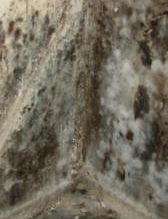 |
| The process of making bread can add volatile organic compounds into the air. |
The United States EPA recently issued a $1.3 million fine for a California bakery that did not get the necessary air pollution permits and controls to operate the facility’s three bread ovens.
During the leavening stage and baking of the breads, volatile organic compounds like ethanol can be generated and released.
The EPA considers volatile organic compounds to be a precursor to ozone pollution.
The company agreed to install and run machinery that can reduce VOCs by 95 percent.
Every business that releases VOCs or other pollutants into the air can have a major impact on the overall air quality, an EPA spokesperson said in a Lodi News-Sentinel article. Raising awareness and making small changes can make a difference for everyone.
Indoor air quality concerns for workers and residents
People living above small businesses or in the neighborhood can be affected by pollutants and should take steps to reduce exposure in their own homes. See AllerAir’s air purifiers for the home and office.
 |
| Air cleaners with cyclone collectors can manage fine particles at the workplace. |
The air cleaners feature a deep-bed activated carbon filter for the removal of volatile organic compounds, chemicals, odors and gases, a HEPA filter for fine particles and dust and optional UV germicidal filtration for the neutralization of biological contaminants such as mold, viruses and bacteria.
In bakeries and other workplaces where a lot of fine particles may be the main concern, Electrocorp has developed industrial-strength air cleaners with cyclone collectors for maximum protection.
Contact Electrocorp for more information and options.



















